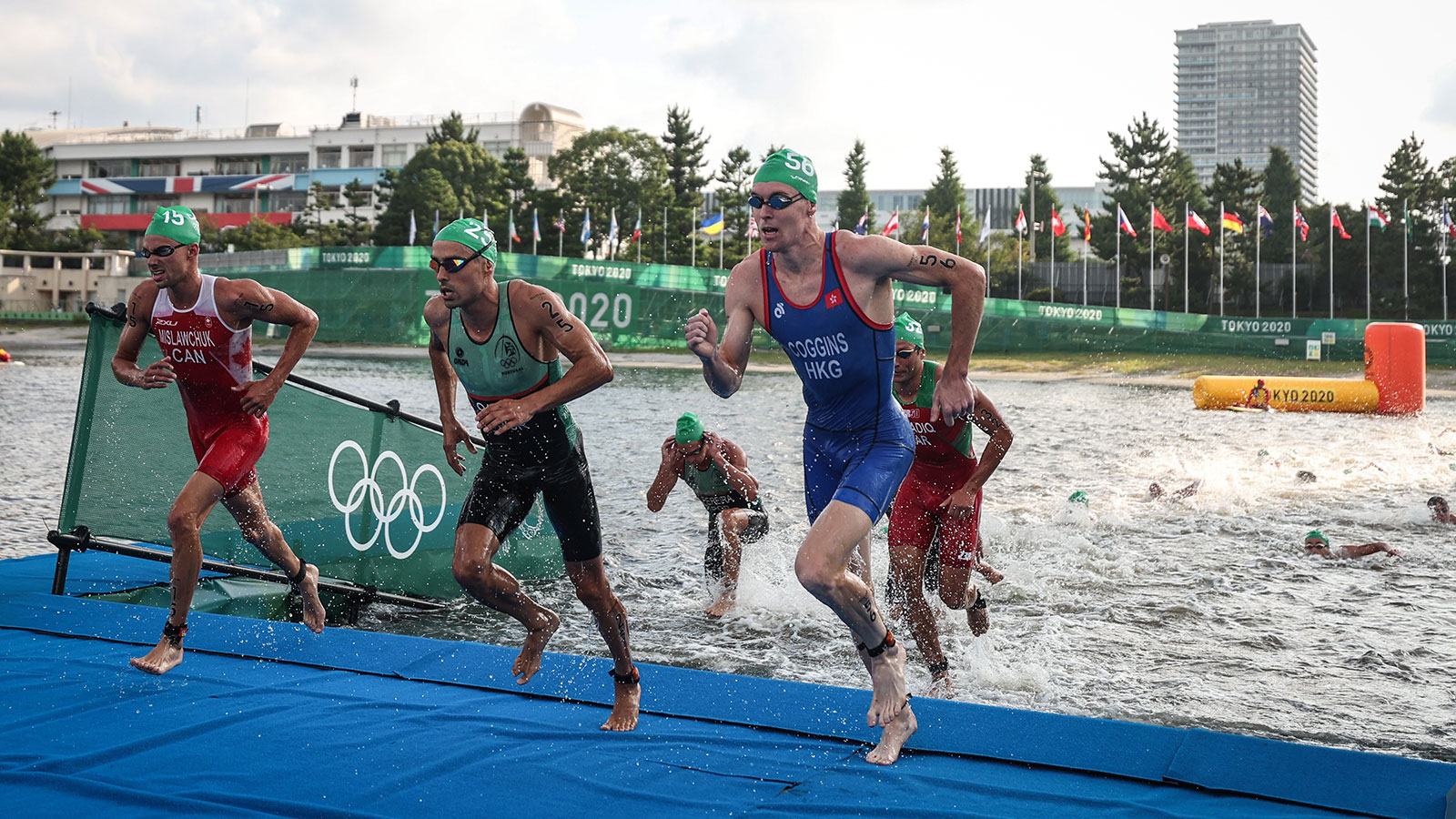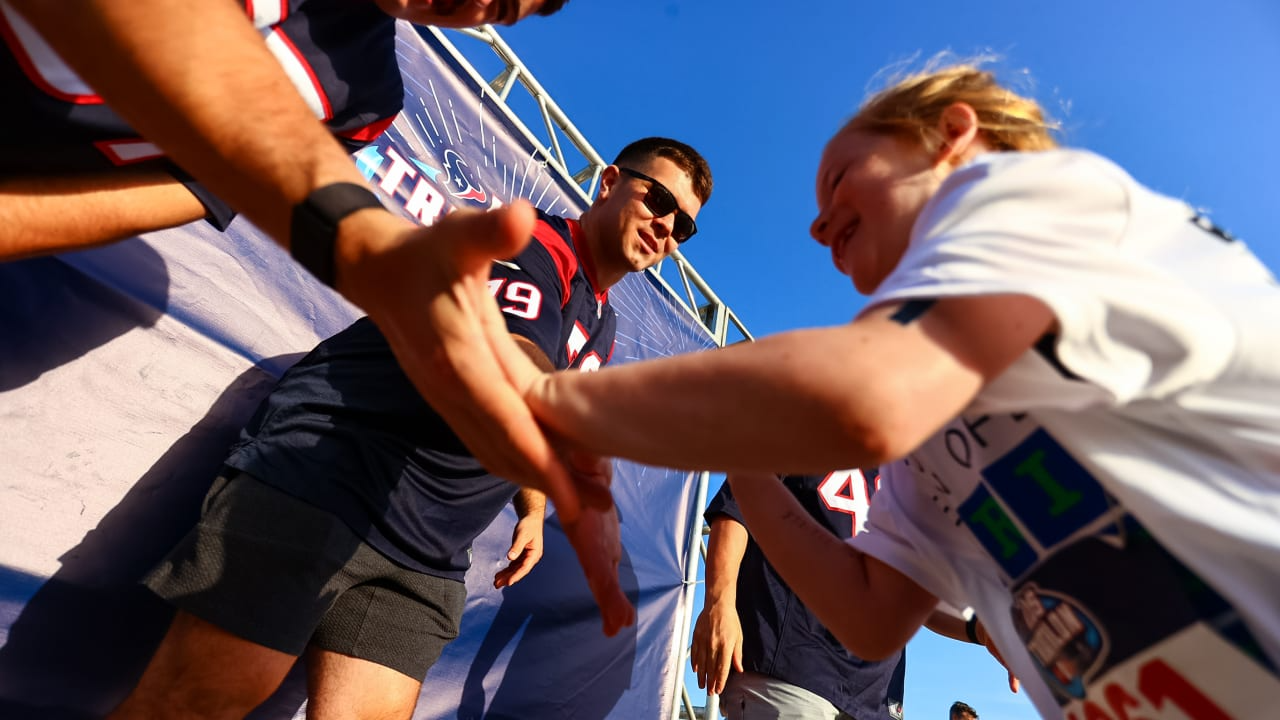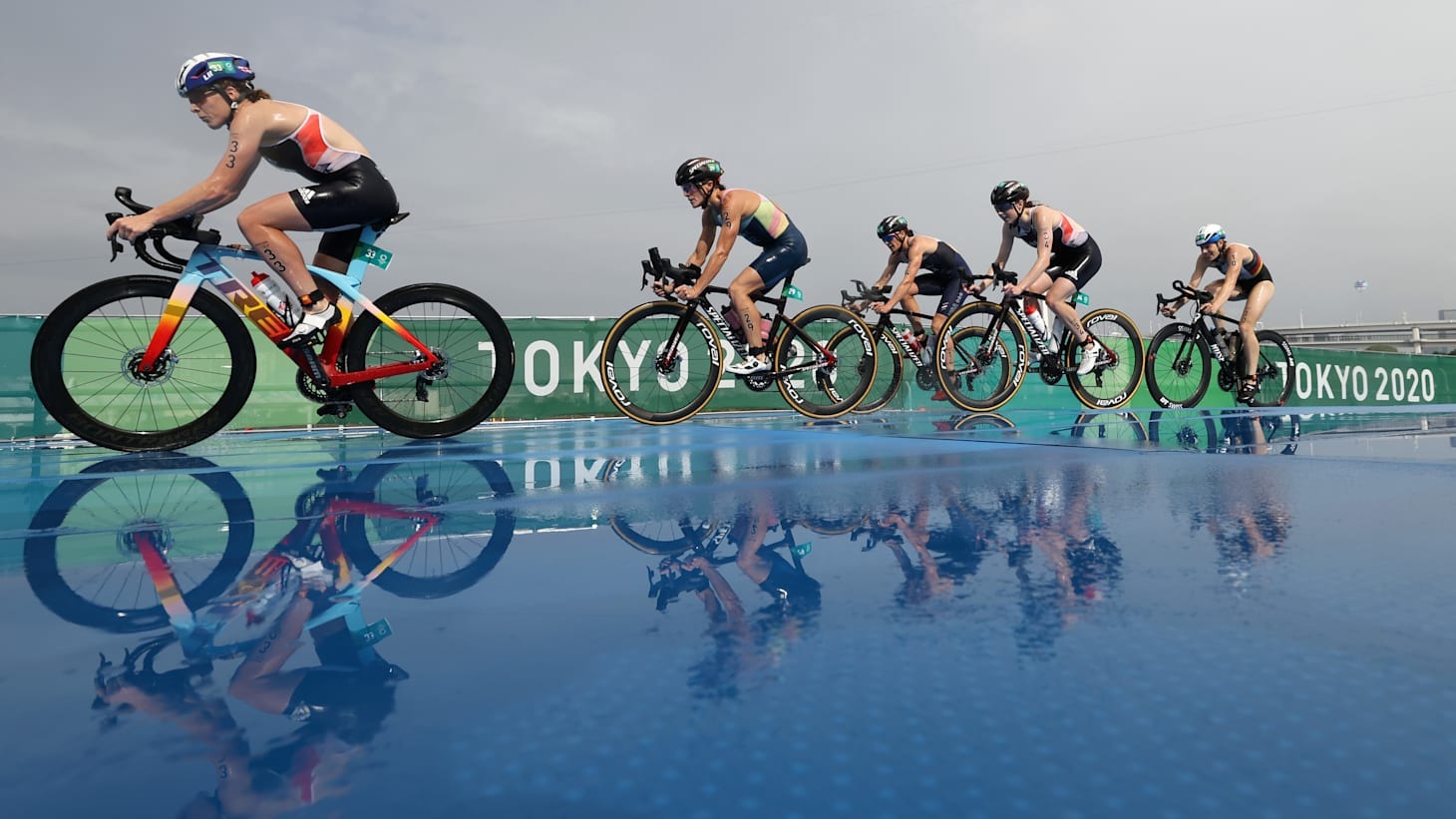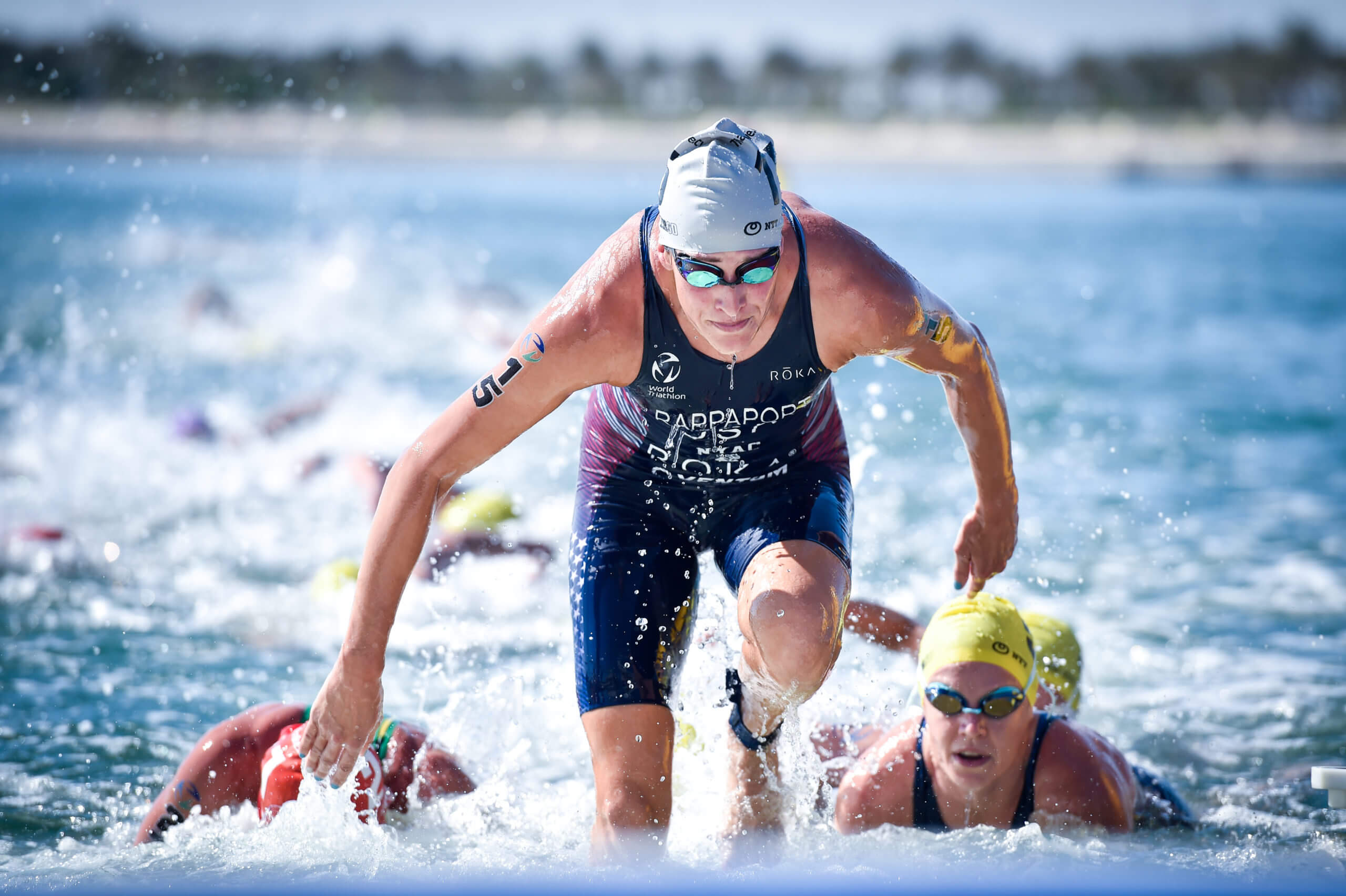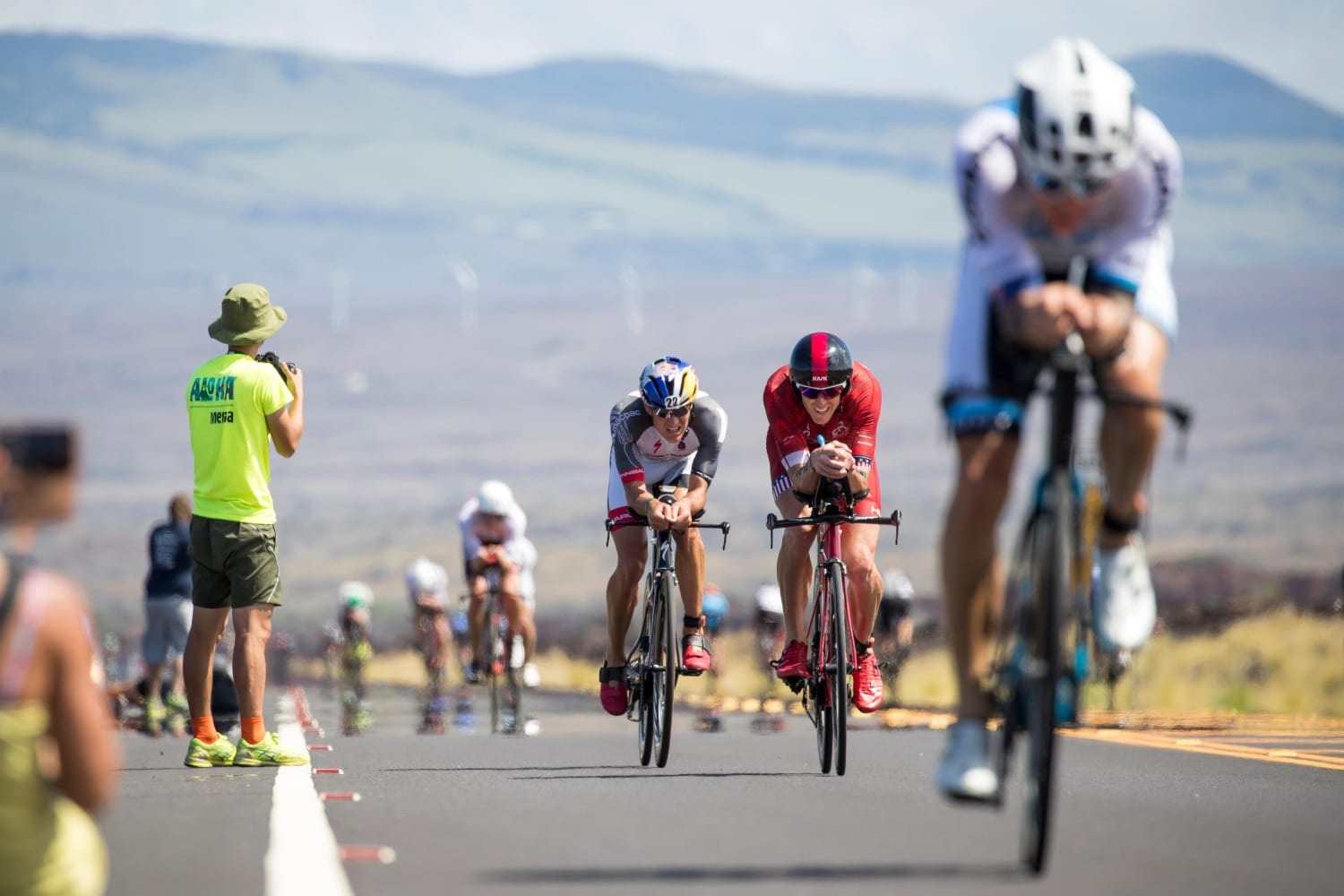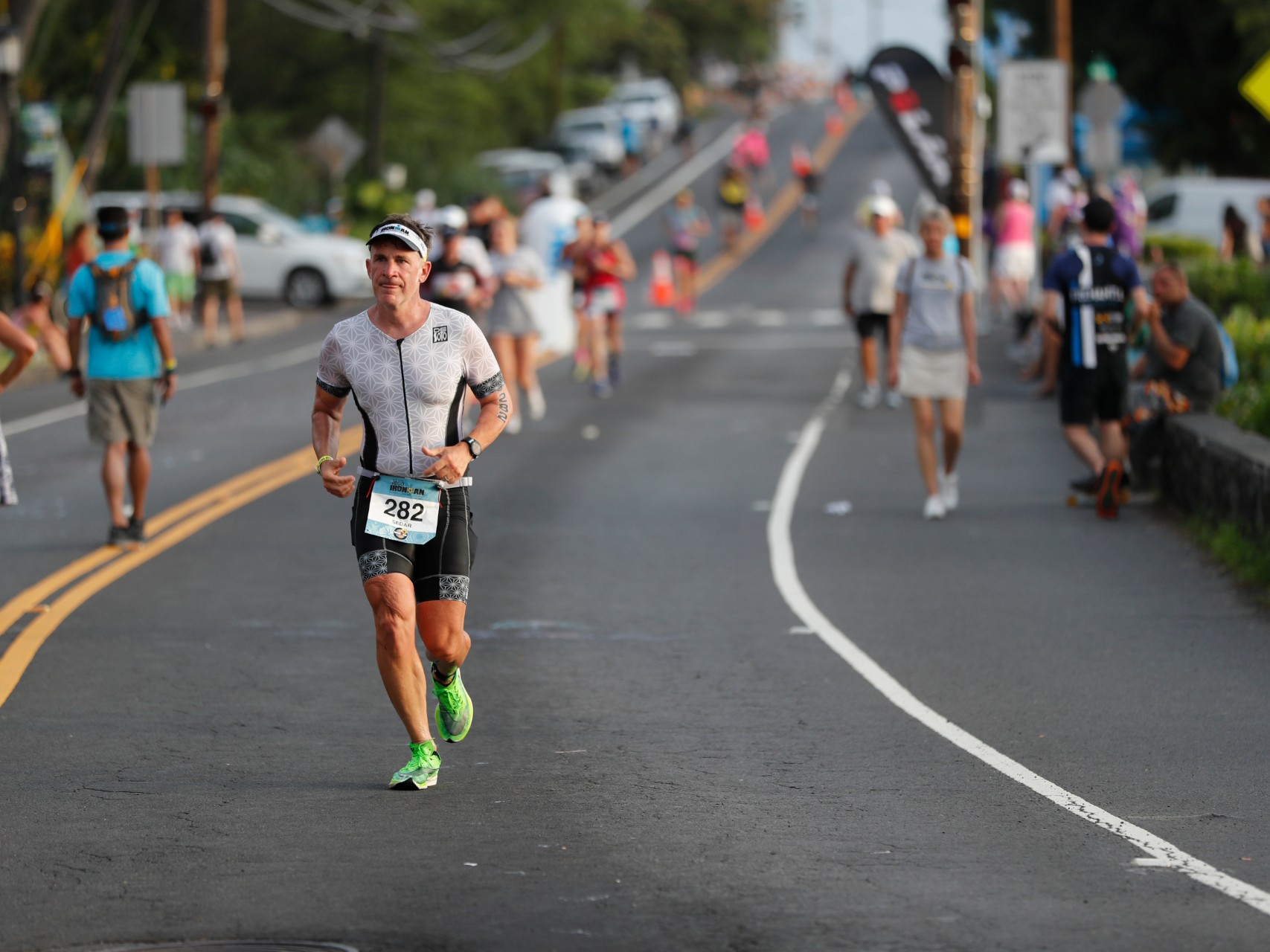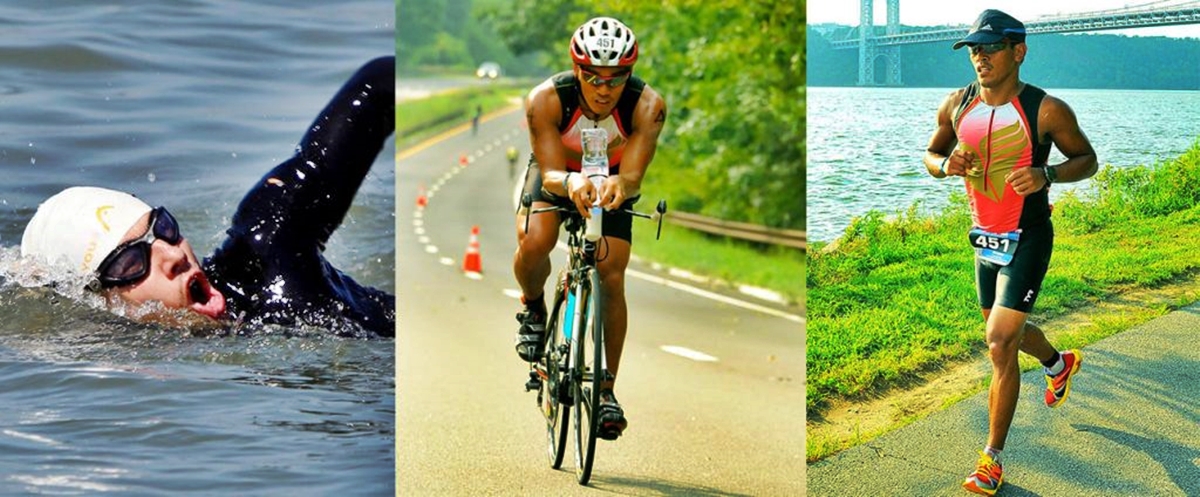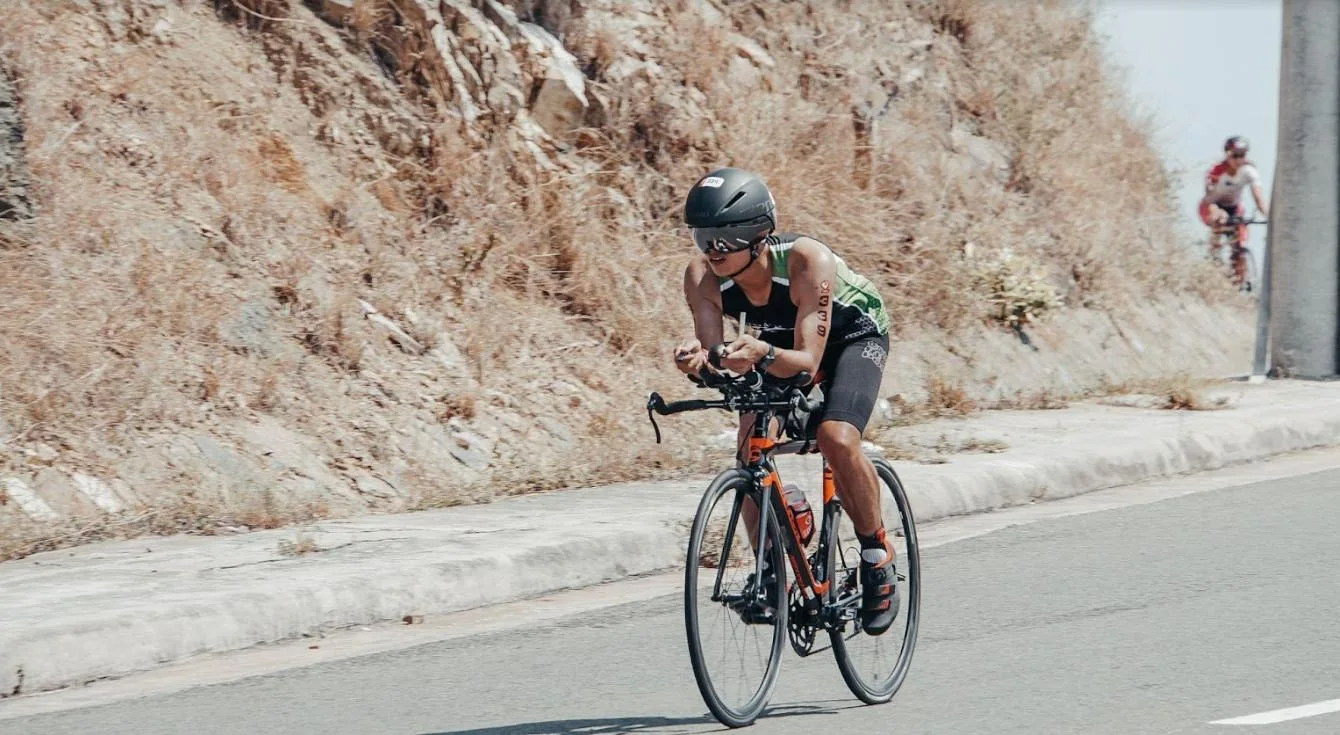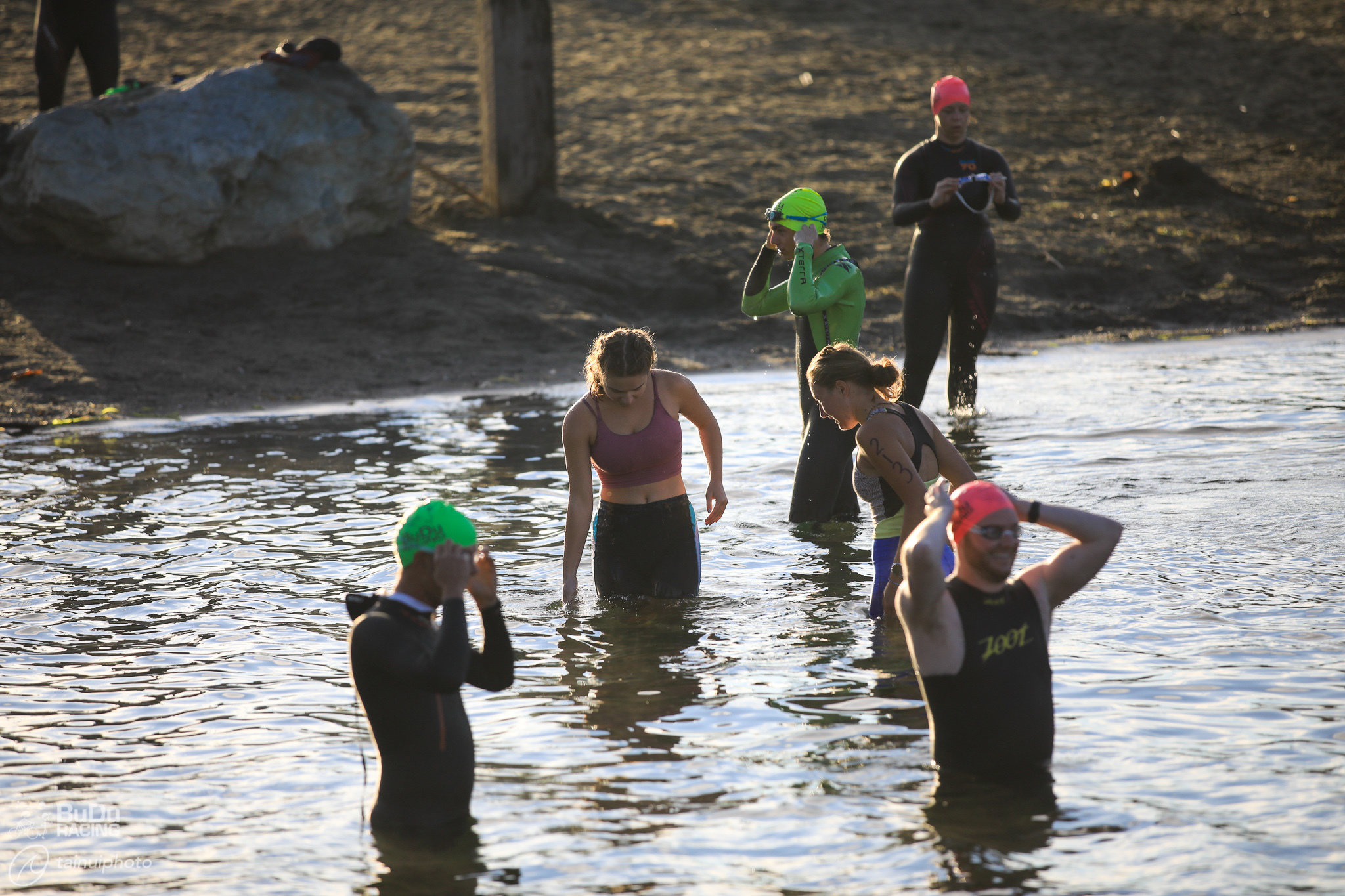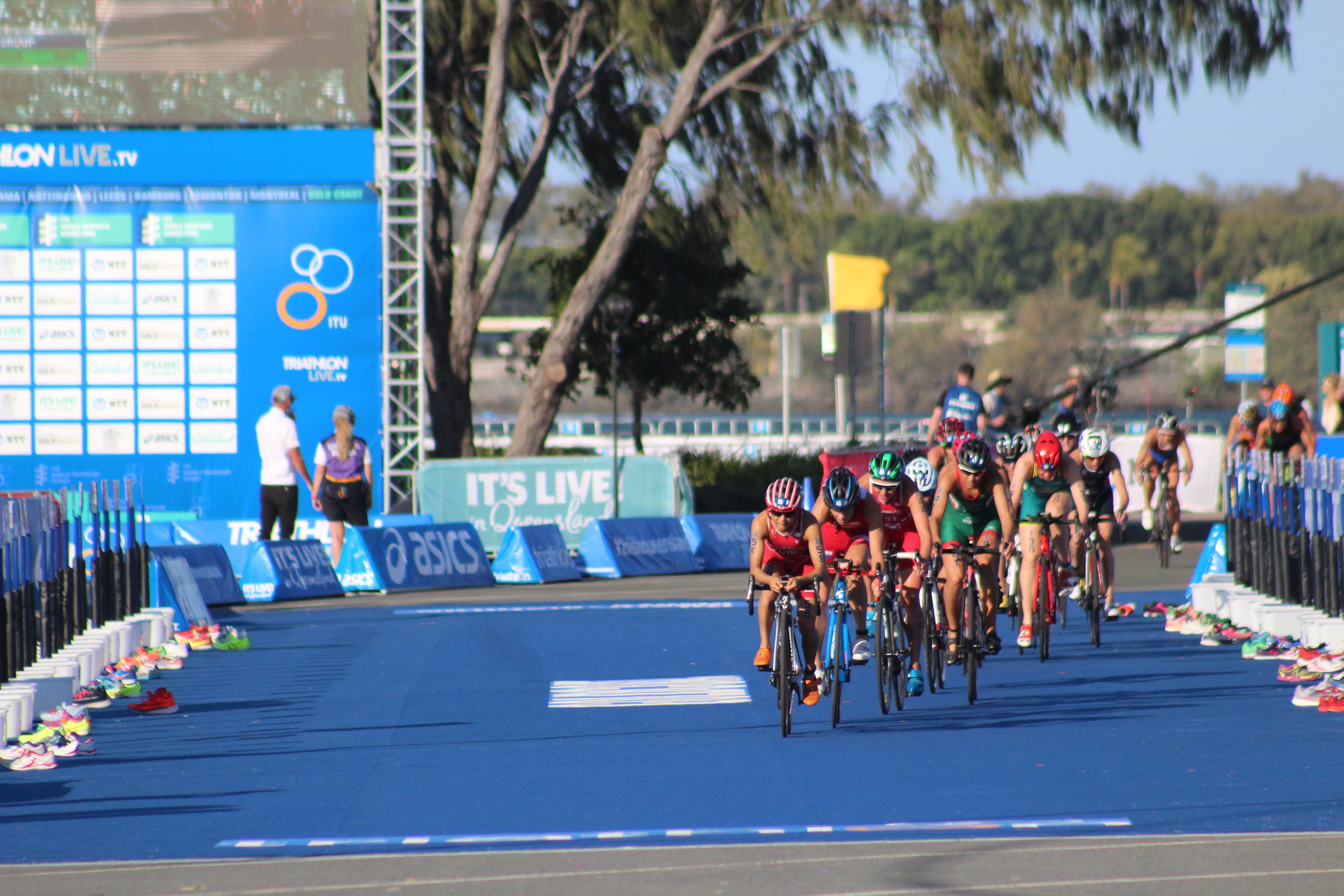

Featured
What Is Long Course Triathlon
Modified: January 22, 2024
Learn all about the long course triathlon, from training tips to race strategies. Discover the top featured events and gear recommendations to conquer this challenging endurance sport.
Introduction
Welcome to the exciting world of long course triathlon, where endurance, strength, and mental fortitude combine to create the ultimate athletic challenge. Whether you’re a seasoned triathlete looking to push your limits or a newcomer seeking a thrilling and fulfilling adventure, long course triathlon offers a unique and exhilarating experience like no other.
A long course triathlon, also known as an Ironman-distance triathlon, is a test of human capability and endurance. It pushes athletes to their physical and mental limits by combining three demanding disciplines: swimming, cycling, and running. The distances in a long course triathlon are significantly longer than those in shorter triathlon formats, making it a true test of stamina and perseverance.
Unlike sprint or Olympic-distance triathlons, which typically last a few hours, completing a long course triathlon can take anywhere from 8 to 17 hours, depending on individual fitness levels and course difficulty. The immense challenge of a long course triathlon attracts athletes from all walks of life who seek to conquer their fears, surpass their limits, and achieve a sense of personal accomplishment.
Engaging in long course triathlon requires dedication, discipline, and meticulous training. Athletes must develop a high level of fitness in each discipline and learn to transition seamlessly between them. Swimming in open water, enduring hours in the saddle, and pounding the pavement for a marathon distance all present unique physical and mental challenges that must be overcome on race day.
Throughout this article, we will explore the fascinating world of long course triathlon, diving into its history, the specific distances and rules involved, training techniques to prepare for this grueling event, essential equipment and gear, as well as strategies for fueling and hydrating during the race. Additionally, we will highlight some of the most iconic long course triathlon events around the world, where athletes gather to push their limits and inspire one another.
So, if you’re ready to embark on an incredible journey of self-discovery, physical achievement, and mental toughness, let’s dive into the world of long course triathlon and explore the challenges, triumphs, and unforgettable experiences that await.
Definition of Long Course Triathlon
Long course triathlon, also known as Ironman-distance triathlon, is a challenging endurance sport that combines three disciplines: swimming, cycling, and running. It is characterized by its extensive distances, testing the limits of an athlete’s physical and mental abilities.
In a long course triathlon, participants start by swimming a long distance in open water, typically ranging from 1.9 to 3.86 kilometers (1.2 to 2.4 miles). Once out of the water, they transition to the cycling leg, which typically covers a distance of 90 to 180 kilometers (56 to 112 miles). After completing the cycling portion, athletes then move on to the final leg of the race, a full marathon run of 42.2 kilometers (26.2 miles).
The total distance covered in a long course triathlon is 140.6 miles (226 kilometers), hence the nickname “Ironman.” This awe-inspiring moniker originated from the first-ever Ironman event held in Hawaii in 1978, where participants had to complete a 2.4-mile swim, 112-mile bike ride, and a full marathon run.
Long course triathlons are renowned for their demanding nature, as athletes must sustain their energy levels and endurance throughout the entire race. The transition from one discipline to another requires mental agility and physical adaptation, adding an extra layer of challenge to the event.
As an official Ironman-distance triathlon, the race adheres to specific rules and regulations set by the World Triathlon Corporation (WTC). These rules ensure fair competition, athlete safety, and consistent standards across different long course triathlon events worldwide.
Long course triathlon is an inclusive sport, welcoming participants of different ages and abilities. There are various age categories, allowing athletes to compete against others within their respective age groups. This encourages camaraderie and fierce competition among participants, regardless of their individual skill levels.
Ultimately, long course triathlon is a test of endurance, mental resilience, and determination. It challenges athletes to push past their limits, conquer their fears, and achieve remarkable personal growth.
In the following sections, we will delve deeper into the history of long course triathlon, the specific distances and rules involved, as well as the training techniques and preparation required to tackle this formidable event.
History of Long Course Triathlon
The history of long course triathlon dates back to the 1970s when a debate emerged among athletes about who were the fittest – swimmers, cyclists, or runners. To settle the debate, a group of friends in Hawaii organized the first-ever Ironman event in 1978.
The Ironman triathlon was conceived as a unique race that combined the Waikiki Roughwater Swim, a 2.4-mile (3.86-kilometer) ocean swim; the Oahu Bike Race, a 112-miles (180 kilometers) cycling race around the island; and the Honolulu Marathon, a full marathon 42.2-mile (42.2-kilometer) run. The event aimed to test the limits of human endurance and celebrate the spirit of ultra-endurance athleticism.
Gordon Haller, a naval communications specialist, emerged as the first Ironman champion, completing the course in 11 hours, 46 minutes, and 58 seconds. His victory set the stage for the growth and popularity of the long course triathlon format.
Following the success of the inaugural Ironman event, similar races began to emerge in different parts of the world. In 1984, the Ironman World Championship became an annual event held in Kailua-Kona, Hawaii. It attracted the world’s top triathletes and became the pinnacle of long course triathlon competitions.
In the early years, the Ironman event was primarily dominated by American athletes, but as the sport gained widespread recognition and popularity, triathletes from around the world started joining the ranks of Ironman champions. Athletes such as Mark Allen, Dave Scott, Paula Newby-Fraser, Natascha Badmann, and Chrissie Wellington became household names in the triathlon community, achieving legendary status for their remarkable performances in long course events.
Over the years, the demand for long course triathlon races grew exponentially. Recognizing this, the World Triathlon Corporation (WTC) expanded the Ironman brand and started licensing other races to be part of the Ironman circuit. This led to the establishment of numerous Ironman and Ironman 70.3 events worldwide, making the sport accessible to a wider range of athletes.
Today, long course triathlons have become a global phenomenon, drawing thousands of participants and spectators alike. Athletes of all ages and backgrounds challenge themselves in pursuit of the ultimate endurance test.
The growth of long course triathlon has also sparked the development of other ultra-endurance events, such as Ultraman and Challenge Roth, further pushing the boundaries of what was once thought possible.
In the next sections, we will explore the specific distances and rules of long course triathlon, as well as the training methods and preparation necessary to excel in this demanding sport.
Distances and Rules
Long course triathlon follows a specific set of distances and rules, ensuring fair and consistent competition across different events worldwide. The standard distances for a long course triathlon, also known as the Ironman-distance, are as follows:
Swim: The swimming leg involves covering a distance of 2.4 miles (3.86 kilometers) in open water. Athletes start from a floating platform or shoreline and make their way through the designated course, often marked by buoys.
Cycling: After completing the swim, participants transition to the cycling leg, where they cover a grueling distance of 112 miles (180 kilometers). Cyclists ride on public roads or closed courses, adhering to traffic rules and regulations. It is important for athletes to maintain a steady pace while conserving energy for the subsequent run.
Running: The final leg of a long course triathlon is a full marathon run, covering a distance of 26.2 miles (42.2 kilometers). Athletes push their physical and mental limits as they navigate through the course, often in the scorching heat or challenging terrain.
Apart from the distances, long course triathlon follows specific rules and regulations set by the World Triathlon Corporation (WTC) and individual race organizers. Some of the key rules include:
- Timing and Cut-off Times: Each event has specific cut-off times for each leg of the race. Athletes must complete the swim, bike, and run within the designated time limits to remain in the competition.
- Transition Areas: Transition areas are designated areas where athletes switch between disciplines. Athletes must carefully follow the rules and set up their equipment in the designated spots to ensure fair play.
- Drafting: Drafting, or closely following another participant to reduce wind resistance, is strictly regulated in long course triathlon. Athletes must maintain a safe distance from other competitors to avoid penalties.
- Equipment: Long course triathlons have specific rules regarding equipment, including wetsuits for the swim leg, bicycles that meet certain standards, and helmets that comply with safety regulations.
- Penalties: Violations of the rules, such as drafting or improper equipment use, can result in time penalties, disqualification, or other penalties imposed by race officials.
Adhering to the established distances and rules ensures fair and consistent competition in long course triathlon events. It also promotes athlete safety and encourages a level playing field for participants of all skill levels.
In the upcoming sections, we will delve into the training techniques and preparations required for long course triathlon, as well as the essential equipment and strategies to excel in this demanding sport.
Training for Long Course Triathlon
Training for a long course triathlon requires a well-structured and disciplined approach. It involves building endurance, improving fitness in each discipline, mastering transitions, and developing mental resilience to conquer the challenges of race day. Here are some key factors to consider when training for a long course triathlon:
Periodization: Long course triathlon training typically follows a periodization approach, dividing the training cycle into blocks. These blocks focus on building aerobic endurance, increasing intensity, incorporating speed work, and tapering to ensure peak performance on race day.
Swimming: Incorporate regular swim sessions to improve technique, endurance, and speed in the water. Focus on drills to refine your stroke, increase efficiency, and build swimming-specific strength. Open water practice is essential to acclimate to the unique challenges of swimming in a race setting.
Cycling: Cycling forms a significant portion of a long course triathlon. Build endurance by incorporating long rides, gradually increasing distance and intensity. Include hill repeats, tempo rides, and interval training to improve strength and speed. Practicing race-specific pacing will help simulate the demands of the cycling leg.
Running: Develop running endurance by gradually increasing mileage and including various types of runs such as easy runs, long runs, tempo runs, and interval sessions. Incorporate brick workouts, where you transition from cycling to running, to adapt to the specific challenges of running off the bike.
Brick Workouts: Brick workouts, combining two disciplines in one session, are crucial for adapting to the challenges of race day transitions. Practice going from bike to run to help your body adjust to the different muscle groups and movement patterns required.
Strength and Conditioning: Strength training is essential to prevent injuries, improve overall performance, and enhance power and stability. Focus on functional exercises that target the major muscle groups used in swimming, cycling, and running.
Mental Toughness: Long course triathlon requires mental fortitude and resilience. Practice mental techniques such as visualization, positive self-talk, and goal-setting to stay focused and motivated during training and on race day.
Recovery and Rest: Adequate rest and recovery are critical for allowing the body to adapt and rebuild after intense training sessions. Incorporate rest days and active recovery activities such as stretching, foam rolling, and massage to prevent injuries and optimize performance.
Nutrition and Hydration: Proper fueling and hydration strategies are essential during long course triathlon training. Experiment with different nutrition plans to find what works best for you, fueling appropriately before, during, and after workouts.
Progression and Adaptation: Gradually increase the volume and intensity of your training as your fitness improves. Listen to your body, recognize signs of overtraining, and make adjustments to ensure steady progress while avoiding burnout or injury.
Remember, consistency and patience are key when training for a long course triathlon. Everyone’s journey is unique, so it’s important to find a training plan that suits your individual needs and capabilities.
Next, we will explore the essential equipment and preparation required for long course triathlon, as well as strategies for fueling and hydrating during the race.
Preparation and Equipment
Proper preparation and having the right equipment are crucial for a successful long course triathlon. From fine-tuning your race strategy to ensuring you have the necessary gear, here are some key considerations for preparing for this endurance event:
Race Strategy: Develop a race strategy that takes into account your strengths and weaknesses. Consider your pacing, nutrition plan, and mental approach. Set realistic goals and have a backup plan in case things don’t go as expected.
Training and Tapering: Gradually reduce training volume and intensity in the weeks leading up to the race. This tapering period allows your body to recover and maximize its performance potential on race day.
Transition Practice: Practicing transitions is essential. Set up a transition area at home or at your training location to simulate race day conditions. Practice efficiently transitioning between disciplines and laying out your gear in a way that minimizes wasted time.
Swim Gear: Invest in a proper-fitting wetsuit that provides buoyancy and improves swim efficiency. Goggles with anti-fog lenses, a comfortable swim cap, and earplugs (if needed) are also essential items to have during the swim leg.
Cycling Gear: A well-maintained and properly-fitted road or triathlon bike is crucial for the cycling leg. Ensure that your bike is in proper working order, including checking tire pressure, brakes, and gears. Wear a comfortable and aerodynamic helmet that meets safety standards. Carry tools and spare tubes in case of any mechanical issues.
Running Gear: Choose high-quality running shoes that provide adequate support and cushioning for your feet. Opt for moisture-wicking clothing to keep you comfortable during the run. Consider wearing a hat or visor to shield yourself from the sun, and don’t forget to apply sunscreen.
Nutrition and Hydration: Develop a nutrition plan that suits your individual needs. Experiment with different fueling options during training to find what works best for you. Carry energy gels, bars, or other snacks for on-the-go fueling during the race. Stay hydrated by carrying a water bottle, either on your bike or in a hydration pack for the run.
Race Essentials: Pack a race bag with all the essentials you’ll need on race day, including a towel, extra clothes, a fresh pair of socks, a change of shoes, sunscreen, a first aid kit, and any personal items you might need before and after the race.
Mental Preparation: Prepare yourself mentally for the challenges you may face during the race. Visualize yourself crossing the finish line and overcoming any obstacles that may arise. Stay calm and positive throughout the race, focusing on one discipline at a time.
Preparing for a long course triathlon requires attention to detail and careful planning. Taking the time to prepare yourself physically, mentally, and ensuring you have the right equipment will set you up for a successful and enjoyable race day.
In the following sections, we will explore strategies for nutrition and hydration during the race, as well as common challenges athletes may encounter and how to overcome them.
Nutrition and Hydration
Nutrition and hydration play a crucial role in the success of a long course triathlon. Proper fueling and hydration strategies can help maintain energy levels, prevent dehydration, and optimize performance throughout the race. Here are some key considerations for nutrition and hydration during a long course triathlon:
Pre-Race Meal: Consume a balanced meal rich in carbohydrates the night before the race to top off glycogen stores and provide sustained energy. Opt for easily digestible foods such as pasta, rice, and lean proteins, and avoid heavy or spicy meals that may cause digestive issues.
Pre-Race Hydration: Hydrate properly in the days leading up to the race. Drink water regularly and consider consuming electrolyte-rich beverages to replenish electrolyte levels. On race day, consume a moderate amount of fluids leading up to the swim start to ensure proper hydration without feeling overly full.
During the Swim: As drinking during the swim leg is not possible, focus on your hydration and fueling strategy beforehand. Consume fluids and carbohydrates leading up to the swim start to ensure your body is properly fueled for the first leg of the race.
Cycling Nutrition: Plan your nutrition strategy for the cycling leg based on your estimated race time. Aim to consume around 200-300 calories per hour, depending on your personal needs and preferences. Energy gels, bars, and sports drinks provide easily digestible carbohydrates to fuel your muscles. Carry these items in easily accessible pockets or on your bike.
Cycling Hydration: Drink regularly during the bike leg to prevent dehydration. Aim to consume around 500-750 milliliters of fluid per hour, or more depending on conditions such as heat and humidity. Use a combination of water and electrolyte-rich sports drinks to replenish fluids and minerals lost through sweat.
Running Nutrition: Continue fueling with small, frequent carbohydrate-rich snacks such as gels, chews, or energy bars during the run leg. Consume them in small amounts to avoid digestive discomfort. Pay attention to your body’s cues and adjust your nutrition plan as needed.
Running Hydration: Hydration is crucial during the run leg, particularly on hot and humid days. Aim to consume around 150-250 milliliters of fluid every 15-20 minutes. Utilize aid stations to rehydrate and consider carrying a handheld bottle or wearing a hydration pack for easy access to fluids.
Electrolyte Balance: Electrolytes such as sodium, potassium, and magnesium are essential for maintaining fluid balance and proper muscle function. Include electrolyte-rich foods, sports drinks, or electrolyte tablets/gels in your nutrition plan to prevent electrolyte depletion.
Post-Race Recovery: After crossing the finish line, prioritize recovery by consuming a mix of carbohydrates and protein within 30-60 minutes. This helps replenish glycogen stores and kickstart muscle repair. Rehydrate by drinking plenty of fluids and consider consuming a sports recovery drink or electrolyte-rich beverage.
It’s important to practice your nutrition and hydration strategy during training to determine what works best for you. Everyone’s nutritional needs and preferences may vary, so finding the right balance is crucial for optimal performance during the race.
In the next section, we will explore common challenges that triathletes may face during a long course triathlon and strategies to overcome them.
Common Challenges and Strategies
Completing a long course triathlon is a feat that comes with its fair share of challenges. Understanding and preparing for these challenges can help triathletes navigate them more effectively. Here are some common challenges faced during a long course triathlon and strategies to overcome them:
Physical Fatigue: Endurance events like long course triathlons can push athletes to their physical limits. Pacing yourself throughout the race and conserving energy early on can help prevent excessive fatigue. Break the race down into smaller segments and focus on one discipline at a time to manage physical exertion.
Mental Fatigue: Long course triathlons can be mentally demanding, especially during the later stages of the race. Practicing mental techniques such as positive self-talk, visualization, and focusing on short-term goals can help combat mental fatigue. Surround yourself with supportive and encouraging spectators or fellow triathletes to stay motivated.
Heat and Humidity: Competing in hot and humid conditions can pose a challenge during a long course triathlon. Prepare by training in similar weather conditions to help acclimatize your body. Stay hydrated by drinking fluids regularly, wear lightweight and breathable clothing, and consider cooling methods such as pouring water over your head or using ice packs.
Nutrition and Hydration: Insufficient fueling and poor hydration can lead to fatigue, cramping, and a decline in performance. Plan your nutrition and hydration strategy well in advance, testing different products and quantities during training. Practice fueling on the bike and run to find what works best for you. Utilize aid stations and carry your nutrition and hydration items in easily accessible places.
Transition Efficiency: Transitions between disciplines can be a source of time loss if not executed efficiently. Practice transitions during training to streamline the process. Lay out your gear in a logical and organized manner and rehearse the sequence of switching from one discipline to the next. Use visual cues and mental reminders to transition smoothly and minimize time wasted.
Cramping and Muscle Fatigue: Muscle cramps and fatigue can occur, particularly during the later stages of a long course triathlon. Proper training, including strength and conditioning exercises, can help prevent muscle imbalances and improve endurance. Stretching during transitions and incorporating salt/electrolyte supplements can also help reduce the likelihood of cramping.
Mechanical Issues: Mechanical issues with your bike or equipment can disrupt your race. Ensure your bike is well-maintained and undergoes regular servicing. Carry spare tubes, a tire repair kit, and other necessary tools for minor repairs. Familiarize yourself with basic bike maintenance and troubleshooting techniques to handle unexpected mechanical issues efficiently.
Emotional Challenges: Endurance events can often bring out a range of emotions, from excitement to anxiety. Stay focused on your race goals and manage any negative emotions by redirecting your thoughts to positive affirmations or visualizations. Seek support from friends, family, or fellow athletes before and during the race to help manage emotional ups and downs.
Unpredictable Weather Conditions: Weather conditions on race day may not always be ideal. Prepare for various weather scenarios by checking the forecast and packing appropriate gear. Adapt your race strategy and equipment choices based on the conditions, keeping safety as the utmost priority.
Every challenge can be an opportunity for growth and success. Being mentally prepared, having a plan in place, and developing resilience can help you overcome obstacles and achieve your goals in a long course triathlon.
Finally, let’s take a look at some of the famous long course triathlon events that attract athletes from around the world.
Famous Long Course Triathlon Events
The world of long course triathlon is filled with renowned events that challenge athletes and captivate spectators alike. These races bring together triathletes from around the globe, showcasing their talent and determination. Here are some of the famous long course triathlon events that have achieved legendary status:
Ironman World Championship – Kailua-Kona, Hawaii: Known as the pinnacle of long course triathlon, the Ironman World Championship is held annually in Kailua-Kona, Hawaii. Athletes from all over the world qualify to participate in this iconic event, which takes place in October each year. The race features a challenging course with a swim in the crystal-clear waters of Kailua Bay, a bike ride through lava fields, and a marathon run along the Ali’i Drive. The Ironman World Championship showcases the ultimate test of endurance, attracting top triathletes and capturing the imaginations of millions of spectators.
Challenge Roth – Roth, Germany: Considered one of the most renowned long course triathlons in Europe, Challenge Roth takes place in Roth, Germany. The race is known for its fast and flat course, scenic countryside, and enthusiastic crowd support. Athletes swim in the Main-Danube Canal, cycle through the picturesque Franconian region, and conquer the marathon run through the iconic solar valley. Challenge Roth is celebrated for its warm atmosphere and epic finish line experience, making it a favorite among both professional and age-group triathletes.
Ironman World Championship 70.3 – Various Locations: The Ironman 70.3 World Championship is a prestigious event that showcases the best triathletes racing over half the distance of a full Ironman. The location of the championship changes each year, with previous host cities including Nice, France; Port Elizabeth, South Africa; and St. George, Utah. The race attracts elite athletes from all over the world, battling it out over a 1.2-mile swim, 56-mile bike ride, and 13.1-mile run.
Escape from Alcatraz – San Francisco, California: Escape from Alcatraz is an iconic long course triathlon held in the heart of San Francisco. The race starts with a 1.5-mile swim in the frigid waters of the San Francisco Bay, with athletes setting off from the notorious Alcatraz Island. The bike course encompasses scenic views of the Golden Gate Bridge, followed by an 8-mile trail run through rugged terrain. Known for its challenging conditions and breathtaking scenery, Escape from Alcatraz is a bucket list race for many triathletes.
ITU Long Distance Triathlon World Championships: Organized by the International Triathlon Union (ITU), the Long Distance Triathlon World Championships gathers elite athletes from around the world to compete for the title of world champion. The location of the championships changes annually, offering diverse courses and highlighting different host cities. This prestigious event showcases the best long-distance triathletes delivering thrilling performances and intense competition.
These are just a few examples of the many famous long course triathlon events that inspire and captivate athletes and fans alike. Each race offers its own unique challenges and showcases the determination, strength, and tenacity of the participating triathletes.
Whether you aspire to compete at one of these illustrious events or simply witness the incredible feats of endurance, these races represent the pinnacle of long course triathlon and celebrate the indomitable spirit of the athletes who take part.
Conclusion
Long course triathlon is an extraordinary and demanding sport that pushes athletes to their limits. It combines swimming, cycling, and running into a grueling endurance event that tests both physical and mental strength. From the iconic Ironman World Championship in Hawaii to the thrilling Escape from Alcatraz in San Francisco, long course triathlons captivate athletes and spectators alike with their challenges and triumphs.
To excel in a long course triathlon, proper preparation is key. Training should encompass swim, bike, and run sessions, as well as transitioning between disciplines. Periodization, specific brick workouts, and strength training play crucial roles in building endurance and preventing injuries. Mental resilience is equally important, with visualization, goal-setting, and positive self-talk helping athletes persevere during tough moments.
Understanding the distances and rules of a long course triathlon is essential for a successful race. Adhering to the guidelines set by the World Triathlon Corporation ensures fair competition and athlete safety. Additionally, having the right equipment, including a well-maintained bike, proper swim gear, running shoes, and nutrition and hydration supplies, sets athletes up for a smooth and efficient race experience.
Throughout the race, nutrition, hydration, and pacing must be carefully managed. Fueling with carbohydrates, staying hydrated, and maintaining electrolyte balance are critical for optimal performance. Overcoming common challenges like physical and mental fatigue, unpredictable weather conditions, and mechanical issues requires mental toughness and strategic approaches.
Famous long course triathlon events such as the Ironman World Championship, Challenge Roth, and Escape from Alcatraz highlight the pinnacle of the sport. These races attract the best triathletes from around the world and inspire athletes of all levels to push their boundaries and achieve remarkable feats.
Long course triathlon is a journey of perseverance, self-discovery, and personal growth. It challenges individuals to reach new levels of physical and mental strength. Whether you’re a seasoned triathlete or a newcomer looking for an incredible adventure, long course triathlon offers an exhilarating experience like no other.
So, lace up your running shoes, hop on your bike, and dive into the open water – the world of long course triathlon awaits, ready to test your limits and reward you with incredible moments of triumph. Embrace the challenges, embrace the journey, and embrace the spirit of long course triathlon.

